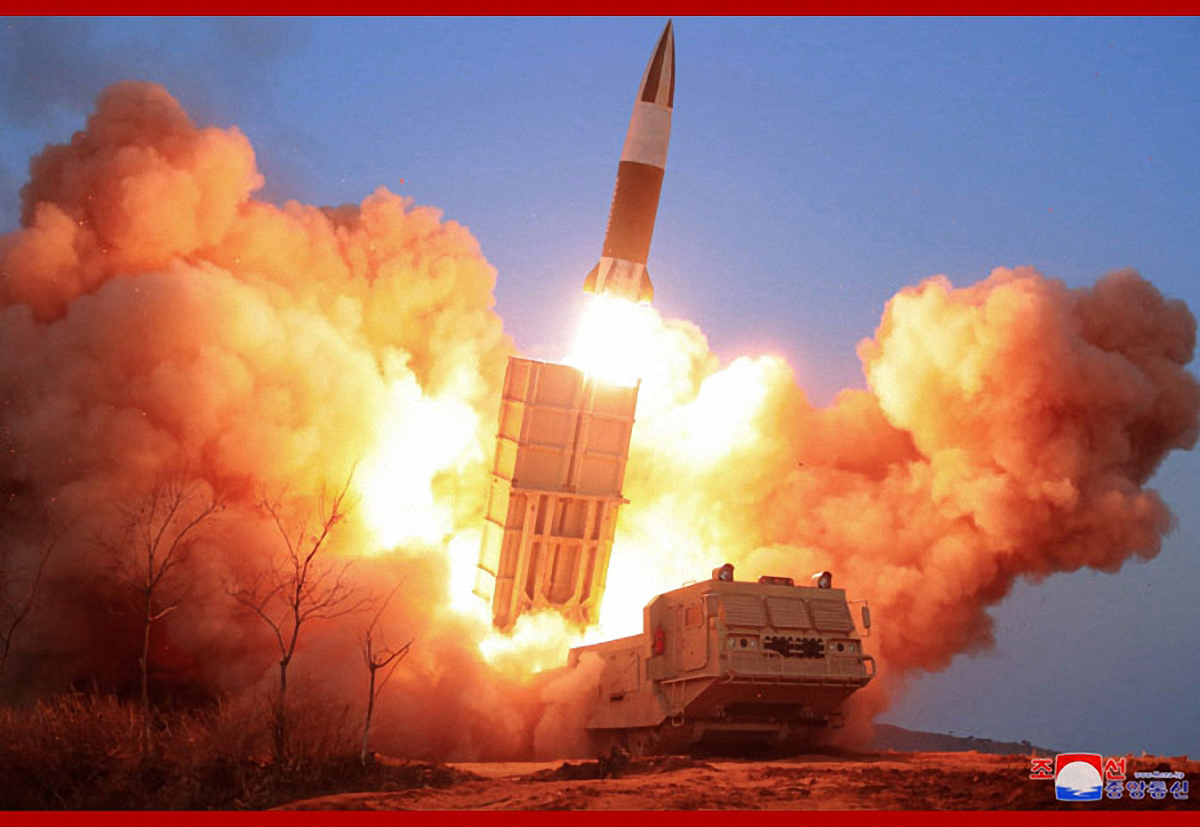N. Korea fires 2 short-range ballistic missiles into East Sea: JCS
By YonhapPublished : March 29, 2020 - 08:48

North Korea fired what appeared to be two short-range ballistic missiles toward the East Sea on Sunday, South Korea's Joint Chiefs of Staff (JCS) said, the latest in a series of projectile launches even as the country is on high alert against the coronavirus.
Both were fired northeastward from the eastern coastal city of Wonsan at 6:10 a.m. within a 20-second interval and flew around 230 kilometers at a maximum altitude of around 30 km, the JCS said, adding that South Korean and US intelligence authorities are analyzing other specifics.
"In a situation where the entire world is experiencing difficulties due to COVID-19, this kind of military act by North Korea is very inappropriate and we call for an immediate halt," JCS said.
The military is closely monitoring the situation while maintaining a readiness posture, it added.
North Korea has carried out a series of weapons tests and artillery firing exercises this year. Except for small artillery firing drills, Sunday's launch is believed to be the North's fourth major weapons test this year.
The last such test came on March 21, when the North fired two short-range ballistic missiles believed to be its version of the US' Army Tactical Missile System (ATACMS) from its western county of Sonchon in North Pyongan Province.
It is not immediately known if leader Kim Jong-un oversaw Sunday's firing, though the North's Korea Central News Agency (KCNA) had reported that the three previous tests this month took place under his watch.
The latest firing could be part of its artillery strike drill for the wintertime exercise, just as the previous three rounds, as military sources have said the exercise is likely to continue throughout this month.
Sunday's firing seems to involve a super-large multiple rocket launcher, sources and experts said. If confirmed, it would mark the seventh test of the ground-based, solid-fuel weapon by the communist country so far, and the third launch this year.
During the March 2 test, the North launched two missiles presumably from the multiple rocket launcher from the Wonsan area toward the East Sea. They flew around 240 kilometers on an apogee of 35 kilometers.
Three projectiles of the similar type fired from its eastern town of Sondok on March 9 flew around 200 kilometers and as high as around 50 km, according to JCS.
A series of the tests were believed to have been aimed at enhancing its capabilities by shortening the firing interval of projectiles so as to make them hard to detect and intercept. Their gap, in fact, was greatly shortened over the course of the tests.
Some experts have said the North may have already put the launcher system into operational deployment, which is feared to serve as one of the most effective weapons aiming at its immediate neighbor, South Korea.
Experts and officials say the North's recent military moves appear to be primarily aimed at strengthening his grip on power amid fears of the spread of the COVID-19 virus and economic difficulties caused by the prolonged international sanctions regime.
The North has intensified efforts to contain the novel coronavirus, though the North has said it has not seen any confirmed case yet, a claim doubted by many.
Last week, North Korea revealed that US President Donald Trump had sent a letter to Kim, offering assistance in the fight against the coronavirus. But Pyongyang has not responded to the US offer, according to US Secretary of State Mike Pompeo.
The North has also not reacted to the similar offer of inter-Korean cooperation on health issues made by South Korean President Moon Jae-in earlier this month, though Kim later sent a letter to Moon to console South Koreans fighting the virus and wish for their good health.
The latest firing came days after South Korea marked the 10th anniversary of the North's sinking of the South Korean warship Cheonan near the Northern Limit Line (NLL), the de facto inter-Korean maritime border, after a torpedo attack by its submarine. The attack killed 46 South Korean sailors.
During a ceremony to mark the fifth "Yellow Sea Defense Day" on Friday, President Moon Jae-in vowed unwavering efforts for peace on the Korean Peninsula, while stopping short of sending any direct messages to the communist country.
It was the first time that a sitting South Korean president has attended the ceremony designed to remember those killed in the Yellow Sea during three battles against the North's provocations in 2002 and 2010, including the Cheonan sinking.
Amid stalled denuclearization talks with the US since the no-deal Hanoi summit in February last year, the North has called for boosting self-defense capabilities.
In his New Year's Day message, Kim Jong-un warned he will show off a "new strategic weapon" in the near future, which experts said may mean an advanced type of its intercontinental ballistic missile (ICBM) or an SLBM.
But it has not followed up on the threat, though it is banned from all ballistic missile activity under UN Security Council resolutions. (Yonhap)

















![[KH Explains] Hyundai's full hybrid edge to pay off amid slow transition to pure EVs](http://res.heraldm.com/phpwas/restmb_idxmake.php?idx=652&simg=/content/image/2024/04/18/20240418050645_0.jpg&u=20240418181020)

![[Today’s K-pop] Zico drops snippet of collaboration with Jennie](http://res.heraldm.com/phpwas/restmb_idxmake.php?idx=642&simg=/content/image/2024/04/18/20240418050702_0.jpg&u=)